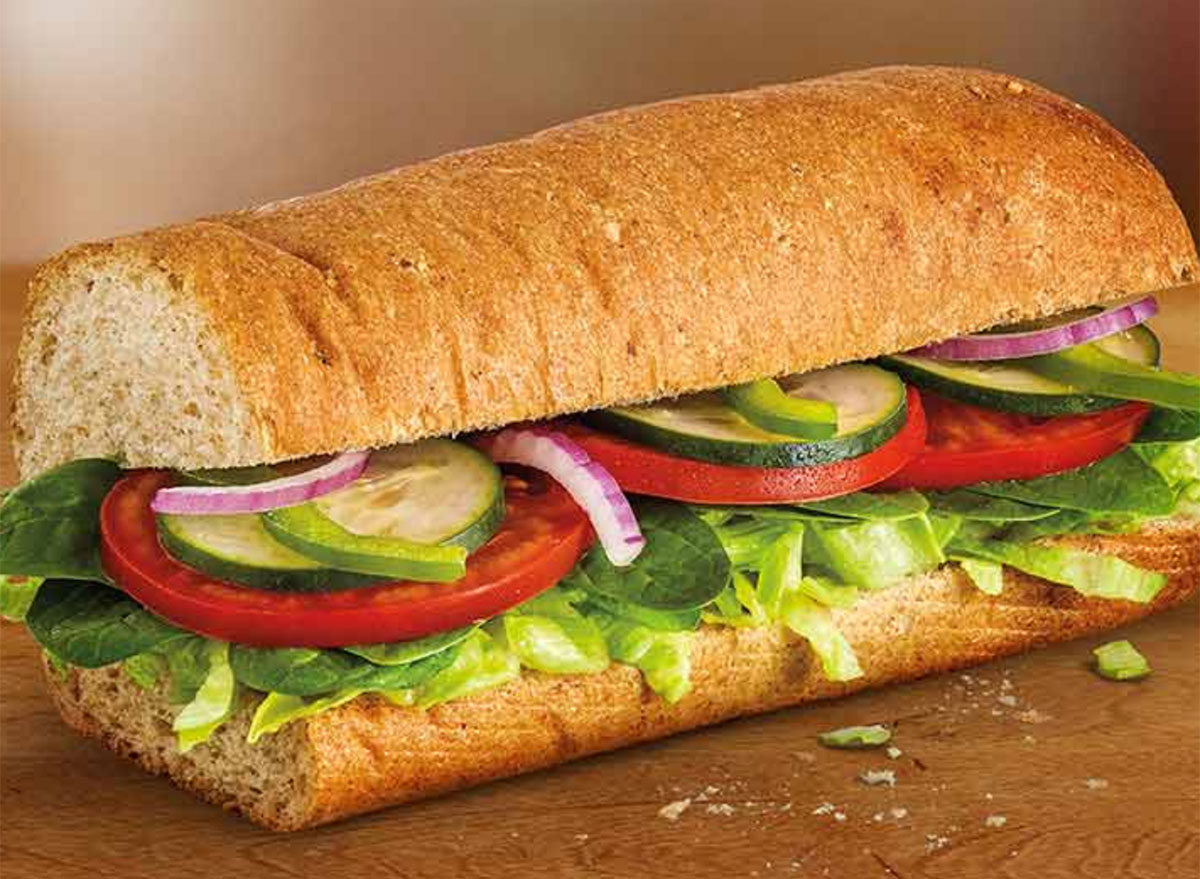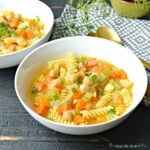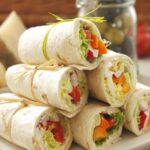Craving fast food but committed to a vegetarian lifestyle? Don’t despair! This guide unveils the secrets to creating delicious and satisfying vegetarian alternatives to your beloved fast-food favorites. From juicy black bean burgers overflowing with flavor to vibrant, healthy salads bursting with color and texture, we’ll explore inventive recipes and techniques that will transform your culinary landscape. Get ready to reinvent your fast-food experience without compromising on taste or satisfaction.
We’ll delve into the art of crafting mouthwatering vegetarian burgers, exploring various patty options and building the perfect bun-based masterpiece. Pizza lovers will rejoice as we uncover creative vegetarian topping combinations and guide you through making a homemade crust and creamy vegan cheese sauce. Hearty salads, flavorful tacos and burritos, and even crispy vegetarian “chicken” nuggets – we’ll cover it all, providing detailed recipes, nutritional information, and stunning visual descriptions to inspire your culinary creativity.
Vegetarian Pizza Alternatives

Vegetarian pizza offers a vibrant canvas for culinary creativity, transcending the limitations of traditional meat-based toppings. By thoughtfully selecting vegetables, cheeses, and flavorful sauces, you can craft pizzas that are both visually stunning and bursting with taste. This section explores exciting vegetarian pizza options and guides you through creating the perfect base and a delicious vegan cheese sauce.
Three unique vegetarian pizza topping combinations are presented below, each designed to deliver a distinct and memorable flavor experience. The combinations focus on contrasting textures and complementary tastes, ensuring a satisfying and diverse culinary adventure.
Vegetarian Pizza Topping Combinations
- Mediterranean Medley: Imagine a pizza adorned with sun-dried tomatoes, their intense sweetness punctuated by the salty tang of Kalamata olives and the creamy texture of crumbled feta cheese. Fresh basil leaves provide a vibrant green contrast and a refreshing herbaceous note, while a drizzle of high-quality olive oil adds a final touch of richness. The vibrant colors alone make this pizza a feast for the eyes.
- Roasted Vegetable Rhapsody: This pizza showcases the earthy sweetness of roasted vegetables. Picture slices of tender butternut squash, caramelized onions with their deep brown hues, and vibrant red bell peppers, all nestled together. A sprinkle of toasted pumpkin seeds adds a delightful crunch, while a creamy goat cheese provides a tangy counterpoint to the sweetness of the roasted vegetables. The combination of colors and textures creates a truly visually appealing and flavorful experience.
- Spicy Southwestern Fiesta: This pizza bursts with vibrant Southwestern flavors. Imagine fire-roasted corn kernels, their sweetness balanced by the spicy kick of jalapeños and the smoky depth of chipotle peppers. Black beans add a hearty texture and protein boost, while a generous scattering of shredded Monterey Jack cheese provides a creamy, slightly sharp contrast. A final flourish of fresh cilantro brightens the entire composition with its fresh, zesty flavor.
Creating a homemade pizza crust using whole wheat flour allows for greater control over ingredients and texture, resulting in a healthier and more flavorful base than commercially available options. The following steps detail the process of making a delicious whole wheat pizza crust.
Homemade Whole Wheat Pizza Crust
- In a large bowl, combine 2 cups whole wheat flour, 1 teaspoon salt, and 1 teaspoon sugar. The flour provides structure, the salt enhances the flavors, and the sugar helps with browning.
- Gradually add 1 cup warm water (around 105-115°F) to the dry ingredients, mixing with a wooden spoon until a shaggy dough forms. The warm water activates the yeast (if using) and helps the gluten develop.
- Turn the dough out onto a lightly floured surface and knead for 5-7 minutes, until smooth and elastic. Kneading develops the gluten, resulting in a chewier crust.
- Place the dough in a lightly oiled bowl, turning to coat. Cover with plastic wrap and let rise in a warm place for 1-1.5 hours, or until doubled in size. The rising process allows the dough to expand and become lighter and airier.
- Preheat your oven to 450°F (232°C). Punch down the dough and roll it out to your desired thickness and shape. The high oven temperature ensures a crispy crust.
- Transfer the dough to a pizza pan or baking sheet and add your desired toppings. The pre-heating of the oven is crucial for the crust’s final texture.
A vegan cheese sauce is essential for creating a truly satisfying vegetarian pizza. The following steps Artikel how to prepare a creamy and flavorful vegan cheese sauce, utilizing readily available dairy-free alternatives.
Vegan Cheese Sauce for Pizza
- In a saucepan, melt 1 tablespoon of vegan butter over medium heat. Vegan butter provides a similar texture and richness to dairy butter.
- Whisk in 2 tablespoons of all-purpose flour to create a roux. The flour thickens the sauce, creating a creamy consistency.
- Gradually whisk in 1 ½ cups of unsweetened plant-based milk (cashew, soy, or almond milk work well). The plant-based milk provides the creamy base for the sauce.
- Stir in 1 cup of nutritional yeast for a cheesy flavor, ½ teaspoon garlic powder, ½ teaspoon onion powder, and salt and pepper to taste. Nutritional yeast provides the signature cheesy taste.
- Simmer for 5-7 minutes, or until the sauce has thickened to your desired consistency, stirring frequently. Simmering ensures the sauce is smooth and free of lumps.
- Remove from heat and stir in 1 tablespoon of lemon juice for brightness and 1 tablespoon of vegan cream cheese (optional) for extra creaminess. The lemon juice adds a touch of acidity that balances the richness of the sauce.
Healthy Vegetarian Fast Food Salads
Fast food doesn’t have to mean sacrificing your health or your commitment to a vegetarian diet. With a little creativity, you can whip up incredibly nutritious and satisfying vegetarian salads that are both quick and delicious, perfect for a busy lifestyle. These salads are packed with fresh, vibrant ingredients and flavorful dressings, offering a refreshing and healthy alternative to traditional fast-food options.
A well-constructed vegetarian salad is a powerhouse of nutrients. The combination of various greens, vegetables, and a flavorful dressing provides a balanced meal, rich in vitamins, minerals, and fiber. By incorporating a variety of textures and colors, you can create a visually appealing and exciting culinary experience that satisfies both your taste buds and your nutritional needs.
Hearty Harvest Salad Recipe
This recipe showcases the vibrant colors and textures of autumnal vegetables, but can easily be adapted with seasonal produce throughout the year.
Yields: 4 servings
Prep time: 15 minutes
Ingredients:
- 5 oz mixed greens (e.g., spinach, romaine, arugula)
- 1 cup roasted butternut squash, cubed
- 1 cup Brussels sprouts, halved and roasted
- 1/2 cup dried cranberries
- 1/2 cup toasted pecans or walnuts
- 1/4 cup crumbled feta cheese (optional, for a vegetarian option, use a vegan feta)
For the Maple-Dijon Vinaigrette:
- 2 tablespoons maple syrup
- 1 tablespoon Dijon mustard
- 2 tablespoons apple cider vinegar
- 1/4 cup olive oil
- Salt and pepper to taste
Instructions:
- Preheat oven to 400°F (200°C). Toss butternut squash and Brussels sprouts with olive oil, salt, and pepper. Roast for 20-25 minutes, until tender and slightly caramelized.
- While the vegetables are roasting, prepare the vinaigrette by whisking together maple syrup, Dijon mustard, apple cider vinegar, olive oil, salt, and pepper in a small bowl.
- In a large bowl, combine the mixed greens, roasted butternut squash, roasted Brussels sprouts, dried cranberries, and toasted pecans.
- Drizzle the vinaigrette over the salad and toss gently to combine.
- Top with crumbled feta cheese (optional) before serving.
Benefits of Diverse Greens and Vegetables
Incorporating a variety of greens and vegetables in your vegetarian salad offers a wide spectrum of nutritional benefits. Different greens provide varying levels of vitamins A, C, and K, along with essential minerals. Adding diverse vegetables like carrots, bell peppers, and broccoli introduces additional vitamins, antioxidants, and fiber. This variety not only enhances the nutritional profile but also creates a more complex and interesting flavor profile. For example, the peppery bite of arugula contrasts beautifully with the sweetness of roasted butternut squash and the slight tartness of cranberries.
Vibrant Vegetarian Salad Visual Description
Imagine a bountiful salad overflowing with color and texture. Deep emerald spinach forms a lush base, contrasting with the fiery orange of roasted butternut squash chunks. Perfectly halved, glistening roasted Brussels sprouts add a nutty brown hue. Scattered throughout are ruby-red cranberries, providing a burst of tartness and visual interest. Toasted pecans offer a warm, earthy brown, their crunchy texture a delightful counterpoint to the softer vegetables. A light drizzle of golden-amber maple-Dijon vinaigrette glistens over the vibrant medley, binding the ingredients together. The optional addition of creamy white feta cheese adds another layer of visual and textural appeal, contrasting with the earthy tones of the other ingredients. The overall effect is a symphony of colors and textures, creating a visually stunning and undeniably appetizing salad.
Embarking on a vegetarian fast-food journey doesn’t mean sacrificing taste or convenience. This guide has equipped you with the knowledge and recipes to create flavorful, healthy, and satisfying vegetarian versions of your favorite fast-food classics. From the simple joy of a perfectly crafted black bean burger to the vibrant explosion of flavors in a homemade vegetarian pizza, the possibilities are endless. So, ditch the guilt and embrace the deliciousness of plant-based fast food – your taste buds will thank you!
Answers to Common Questions
Can I freeze vegetarian burger patties?
Yes, you can freeze uncooked vegetarian burger patties for later use. Wrap them individually in plastic wrap and then place them in a freezer-safe bag or container.
What are some good substitutes for vegan cheese on pizza?
Cashew cream cheese, nutritional yeast, and various store-bought vegan cheese shreds are all excellent alternatives.
How can I make my vegetarian tacos spicier?
Add chopped jalapeños, a dash of your favorite hot sauce, or a pinch of cayenne pepper to your taco filling for extra heat.
Are homemade tortillas difficult to make?
While requiring some practice, homemade tortillas are surprisingly easy to make and offer a superior taste and texture compared to store-bought options.


